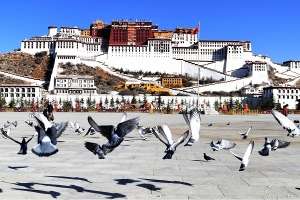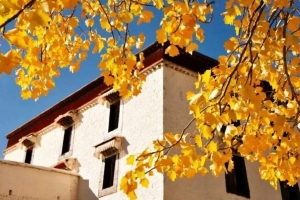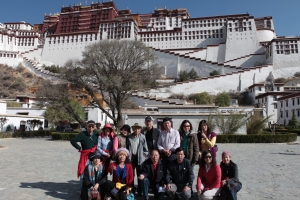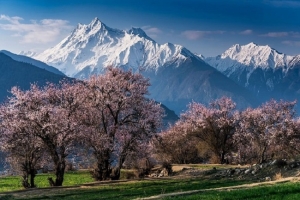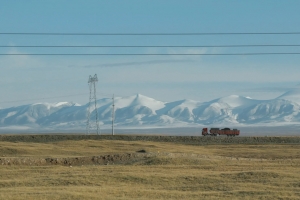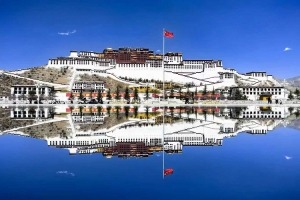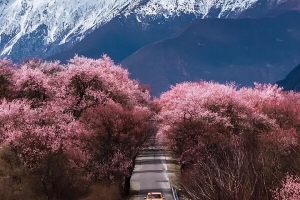Tibet, long heralded as the Roof of the World, conjures images of lofty summits, crisp blue skies, and the spiritual stillness of remote monasteries perched above the clouds. Yet, for many travellers, the altitude itself can be a formidable barrier. Lhasa, Everest Base Camp, and the high plateaus of Nagqu may dazzle in photos, but the reality of thin air and rapid elevation change can be daunting.
However, Tibet’s story doesn’t dwell solely in the heights. Its southeastern landscapes, nestled in verdant valleys and alongside powerful rivers, reveal a softer, greener side of the plateau—one rich with history, culture, and natural beauty. This guide invites you to explore Tibet in a gentler way, tracing paths through its lower-altitude regions, ideal for those easing into the plateau or simply seeking a more tranquil route into this extraordinary land.
The Height of Caution: Understanding Altitude Sickness
Acute Mountain Sickness (AMS) can strike at elevations above 2,500 metres (8,200 ft), with symptoms ranging from mild headaches to severe complications. Lhasa, perched at roughly 3,650 metres (12,000 ft), often proves a rude introduction for those flying in from sea level. The key to a comfortable journey? A slow, deliberate ascent.
This makes Tibet’s lower-elevation regions not only more forgiving, but ideal as introductory destinations for the altitude-wary traveller.
Nyingchi (Linzhi 林芝): Tibet’s Verdant Secret
Altitude: ~2,900 m (9,500 ft)
Best For: Nature lovers, photographers, and those easing into the plateau
Access: Direct flights from Chengdu, Chongqing, and Lhasa to Nyingchi Mainling Airport

Cradled in Tibet’s southeastern fold, Nyingchi defies expectations. With its emerald valleys, alpine forests, and snow-tipped peaks, it feels more akin to Switzerland than the sun-baked plateaus of popular imagination. This is a land where the Yarlung Tsangpo River cuts the world’s deepest canyon and peach blossoms herald the arrival of spring with blushing exuberance.
Don’t Miss:
- Basum Tso: A pristine turquoise lake set against a backdrop of jagged snow peaks—perfect for hiking or quiet contemplation.
- Lulang Forest: A highland meadow framed by dense conifers and grazing yaks; ethereal in spring bloom.
- Nyang River Valley: Ideal for a scenic drive, dotted with photogenic villages and terraced fields.
Nyingchi is not just an entry point—it is a destination in its own right, where altitude gently takes a back seat to awe.
Shannan (Lhoka 山南): Cradle of Tibetan Civilisation
Altitude: 2,900–3,100 m (9,500–10,200 ft)
Best For: Historians, spiritual seekers, and culture lovers
Access: A 2–3 hour drive from Lhasa
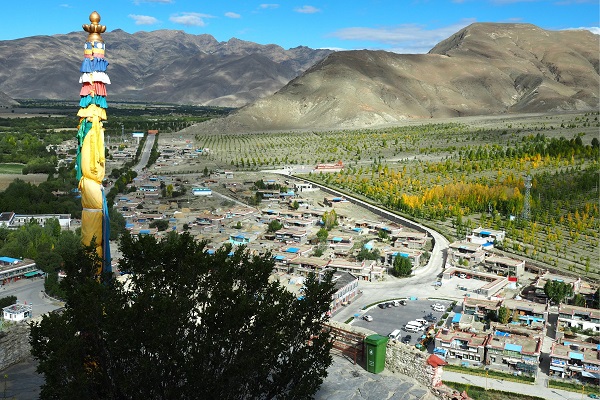
Long overshadowed by the capital, Shannan quietly cradles the roots of Tibetan civilisation. Here, legend and history converge in the fertile Yarlung Valley, where the first Tibetan kings once walked and Buddhism first found its foothold.
Unmissable Sights:
- Samye Monastery: Tibet’s first Buddhist monastery, its mandala-shaped complex a symbol of spiritual harmony.
- Yumbulagang Palace: A fortress-like structure said to be Tibet’s oldest building, perched nobly over rippling fields.
- Tsedang: A modest town and strategic base for cultural exploration, steeped in lore and quiet charm.
Gyantse: A Preserved Echo of Old Tibet
Altitude: ~4,000 m (13,100 ft)
Best For: Acclimatised travellers seeking authenticity off the beaten path
Access: Reachable by road from Lhasa or Shigatse with a steady altitude gain

Though sitting at a higher elevation, Gyantse earns its place in this guide thanks to its timeworn character and more gradual approach via road. Less commercial than its neighbours, this former trade town offers a glimpse of a Tibet that endures behind the headlines.
Highlights:
- Pelkor Chode & the Gyantse Kumbum: A unique multi-storey chorten housing a labyrinth of chapels, murals, and relics.
- Gyantse Dzong: A dramatic hilltop fort with sweeping views and stories etched into its crumbling stones.
Beyond the TAR: The Greater Tibetan Cultural Sphere
Tibet’s spirit extends well beyond the boundaries of the Tibet Autonomous Region (TAR), across Kham and Amdo—areas spread across Sichuan, Yunnan, Qinghai, and Gansu. These regions are often lower in elevation and come with fewer travel restrictions, offering deep cultural immersion with less red tape.
Low-Altitude Gems:
- Shangri-La (Diqing, Yunnan): ~3,200 m; famed for Songzanlin Monastery and painterly grasslands.
- Kangding (Sichuan): ~2,600 m; a lively town where Tibetan and Han traditions mingle beneath snowy peaks.
- Rebgong (Tongren, Qinghai): ~2,600 m; renowned for intricate thangka painting and monastic life.
Traveller’s Notes: Wisdom for the Weary
- Go Slow: Allow your body to adapt—opt for overland routes when possible and avoid rapid ascents.
- Hydrate & Rest: Water, light meals, and plenty of sleep are your best allies.
- Mind the Medicine: Consult a doctor about preventative medications such as Diamox, especially if you’re flying in.
- Permits & Paperwork: For travel within the TAR, foreigners must use a registered agency. Outside the TAR, travel is more flexible.
Beneath the Clouds, the Soul of Tibet Awaits
Tibet need not be an ordeal of breathless ascents and dizzying altitudes. In its lower valleys, beneath veils of mist and pine, lies a softer, quieter Tibet. One of fertile lands and ancient echoes. Of rivers that whisper myths and mountains that watch in silence.
Whether you’re a cautious explorer or a seeker of serenity, the journey into Tibet’s gentler elevations offers not just comfort, but clarity—a reminder that even on the roof of the world, one need not climb to feel elevated.




